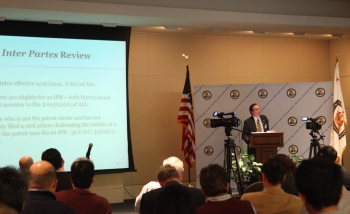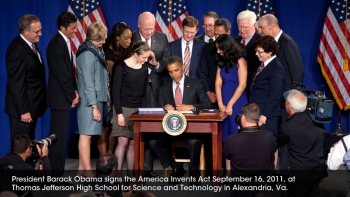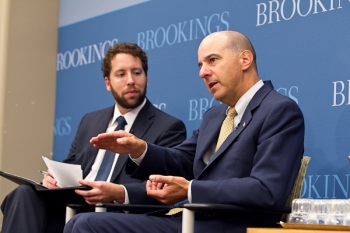Commerce's U.S. Patent and Trademark Office Implements Most Provisions of the America Invents Act
The most significant reform to the U.S. patent system in more than a century is a major step forward as numerous provisions of the Leahy-Smith America Invents Act of 2011 are now in effect. The new rules will spur innovation and economic growth by streamlining the patent application process and introducing new procedures to ensure patent quality. Seven reforms to U.S. patent law went into effect one year after the signing of the bipartisan patent reform legislation by President Barack Obama on September 16, 2011.
Some of the new rules include three new administrative trial provisions—inter partes review, post-grant review, and the transitional program for covered business method patents—will offer third parties timely, cost-effective alternatives to district court litigation to challenge the patentability of an issued patent; a supplemental examination provision that allows applicants to submit additional information relevant to the patentability of an issued patent to the Office in a new procedure that may protect the patent from an inequitable conduct charge; an inventors oath and declaration provision that for the first time allows assignee filing of a patent application; and a citation of prior art and written statements provision will enable the Office to treat the claims in a patent consistent with how a patent owner represents its claims to the courts or in other Office proceedings.







